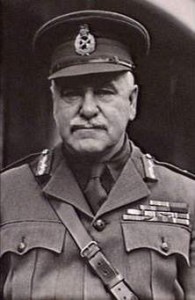Orvieto Stories
Faces of the HMAT Orvieto
The HMAT Orvieto gives some indication of the scale of Victoria’s involvement in the First World War and the ongoing connection our soldiers of the past have to communities, now, across the State.
The State Government believes in sharing the stories of our service men and women to ensure the ‘baton of remembrance’ is passed to future generations.
Here we share the stories of some of those who embarked on the Orvieto, and the legacy they left behind.
- Major Thomas Albert Blamey
- Lieutenant Richard Gardiner Casey
- Colonel Henry Gordon Chauvel
- Lieutenant Roy Victor Cutler
- Colonel the Hon James Whiteside McCay
- Captain James Campbell Stewart
- Lieutenant Vernon Ashton Hobart Sturdee
- Captain John Walstab
- Lieutenant Colonel David Sydney Wanliss
- Lieutenant Colonel Cyril Brudenell Bingham White
- Charles Edwin Woodrow Bean
- Staff Nurse Doris Marion Green
Major Thomas Albert Blamey
Major Thomas Albert Blamey, 30, sailed the Orvieto and joined the Australian Division in Egypt as a general staff officer (intelligence), landing at Gallipoli on 25 April 1915.
In 1918, as Chief of Staff of the Australian Corps under Lt General Sir John Monash, Blamey helped plan the Battle of Hamel – a battle considered the turning point for Allied victory in World War I.
Upon returning to Australia he became Deputy Chief of the General Staff and in 1925 he accepted the role of Chief Commissioner of Victoria Police, resigning in 1936. In March 1942, with Japan having entered the war, Blamey was appointed Commander-in-Chief of the Australian Military Forces and, under General Douglas MacArthur, became commander of Allied land forces in the Pacific. Thomas Albert Blamey died on 27 May 1951.
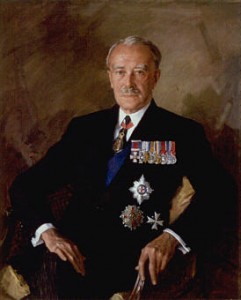 Lieutenant Richard Gardiner Casey
Lieutenant Richard Gardiner Casey
Lieutenant Richard Gardiner Casey, from Melbourne, joined the Headquarters 1st Australian Division and served at Gallipoli as an orderly officer to General Bridges. Appointed as a staff captain with the 3rd Brigade at Gallipoli and later as a general staff officer (intelligence) with the First Division just before its move to the Western Front in 1916, Casey was awarded a Military Cross (MC) and Distinguished Service Order (DSO).
After returning to Australia, a notable career ensued with appointments as Australian Minister to the United States, British Minister of State for the Middle East and in 1944, Governor of Bengal. Later he served as Minister for External Affairs in the Menzies Government. Casey was made a life peer in the House of Lords and Governor-General of the Commonwealth of Australia. Richard Gardiner Casey died 17 June 1976.
 Colonel Henry Gordon Chauvel
Colonel Henry Gordon Chauvel
When Colonel Henry Gordon Chauvel boarded the Orvieto in 1914 it was the beginning of an illustrious military career. As Commanding Officer of the 1st Light Horse Brigade at Gallipoli he saw heavy fighting at Quinn’s, Steele’s and Courtney’s Posts. In September 1915 he was appointed Commander of the 1st Australian Division and promoted to Major General. He commanded various posts through 1916 and 1917, including the 4th Light Horse at Beeresheeba, his role in the battle immortalised in the Australian film The Lighthorsemen. From 1919 to 1930 Chauvel served as the Army Inspector General. Henry Gordon Chauvel died 4 March 1945.
Lieutenant Roy Victor Cutler
Melbourne-born Lieutenant Roy Victor Cutler enlisted on 26 August 1914 and was attached to the 2nd Field Company Engineers. He was quickly promoted through the military ranks and in 1915 he was awarded the Military Cross (MC) “for his devotion to duty and conspicuous courage in laying tunnel charges against Turkish barricades at Russells Top, ANZAC Cove”.
In 1918 he became a Member of the Order of the British Empire and was later commissioned into the Indian Colonial Army.
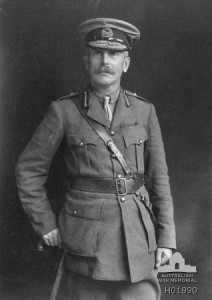 Colonel the Hon James Whiteside McCay
Colonel the Hon James Whiteside McCay
Colonel the Hon James Whiteside McCay was a Member of Victorian Parliament between 1895 and 1900, and became the federal Minister for Defence in 1904. On the recommendation of General Bridges, he was appointed to command the new Australian Intelligence Corps in 1914 and soon after appointed to command the 2nd Infantry Brigade AIF.
Wounded in Gallipoli in 1915, he was evacuated to Egypt and then went on to command the 5th Division which was the first to see serious action in France. He was described by Lt General Sir Brudenell White as “one of the greatest soldiers that ever served Australia … greater even than Monash”. Back in Australia, he was appointed to Chair the Victorian Royal Commission on high prices in 1919 and later became Deputy Chairman of the State Savings Bank of Victoria. During the Victoria Police strike in 1923-24 he acted for several months as the Commander of the Special Constabulary Force. James Whiteside McCay died on 1 October 1930.
 Captain James Campbell Stewart
Captain James Campbell Stewart
Captain James Campbell Stewart joined the Victorian Scottish Regiment in 1901 and was promoted to its adjutant in 1912.
Landing at Gallipoli on 25 April 1915 he led the battalion as acting battalion commander forward “under the hail of shell fire” to the fighting on 400 plateau. He later led the 57th Battalion in the newly formed 15th Brigade in the harassment of the German retreat in March 1917 and again at battles at Polygon Wood and Peronne.
Stewart’s service was noted when he was awarded the Distinguished Service Order (DSO) and was mentioned numerous times in despatches. After WWI he served in various positions in the Department of Lands, including Chairman of the Farmer’s Relief Board and as a member of the Closer Settlement Board. Later, during World War II, he commanded the Melbourne Metropolitan Volunteer Defence Corps. Stewart served as the Chief Marshal of Melbourne’s ANZAC Day March for more than two decades. James Campbell Stewart died 2 June 1947.
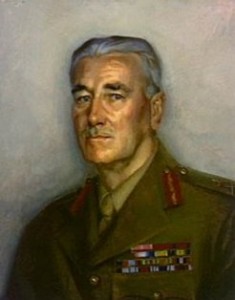 Lieutenant Vernon Ashton Hobart Sturdee
Lieutenant Vernon Ashton Hobart Sturdee
Lieutenant Vernon Ashton Hobart Sturdee, born in Frankston, landed at Gallipoli on 25 April 1915 as Adjutant, 1st Divisional Engineers. Here he controlled the engineering and mining works at Steele’s, Quinn’s and Courtney’s Posts. He was later sent to France and was commended for the “skill and energy” with which he prepared for major operations on the Somme by repairing roads, building camps, laying cables and digging communications trenches. In March 1944 Sturdee took command of the First Australian Army and directed an operation of 110,000 personnel engaged in fighting the Japanese.
At a ceremony on board HMS Glory at Rabaul, New Britain, on 6 September 1945, he accepted the surrender of Japanese forces in his area. In recognition of his services in both World War I and World War II, he was created a Knight Commander of the Order of the British Empire on 1 January 1951. Vernon Ashton Hobart Sturdee died 25 May 1966.
Captain John Walstab
Enlisting in October 1914 as a Captain with the 5th Battalion, Walstab was wounded at Gallipoli on 8 May 1915 during the Battle of Krithia. In November 1916 he was promoted to command the Battalion with the rank of Lieutenant Colonel. In 1917 he was awarded the Distinguished Service Order and appointed to various training positions in England. In the Pacific region during the war years he served in a number of appointments, notably as Superintendent of Police in New Guinea between 1927 and 1942. In World War II, Walstab served in the Middle East as Assistant Provost Marshal with the 1st Australian Corps and later as Deputy Provost Marshal with Headquarters and his notable service was twice mentioned in despatches. John Walstab died on 16 March 1957.
 Lieutenant Colonel David Sydney Wanliss
Lieutenant Colonel David Sydney Wanliss
Lieutenant Colonel David Sydney Wanliss grew up in Ballarat and joined the Victorian Scottish Regiment in 1901, becoming its commanding officer in 1911. Wanliss landed at Gallipoli in 1915 at age 51, and led his battalion at the Battle of Krithia on Helles on 8 May 1915. Known by members of the 5th Battalion as “the father of the regiment”, his legacy survives with Wanliss Gully at ANZAC named after him.
Evacuated from Gallipoli July 1915 with typhoid, he later returned to France and Great Britain to command a number of AIF depots. In April 1912 he became Administrator and Chief Justice of the Mandated Territory of New Guinea. David Sydney Wanliss died 25 September 1943.
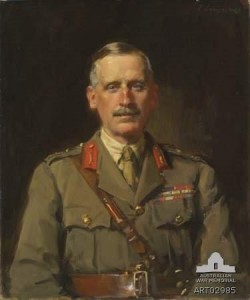 Lieutenant Colonel Cyril Brudenell Bingham White
Lieutenant Colonel Cyril Brudenell Bingham White
Lieutenant Colonel Cyril Brudenell Bingham White left Australian shores on the Orvieto to command the Australian Imperial Force, chosen by General Bridges to be his Chief of Staff at Gallipoli.
White is regarded as the founder of the Australian Imperial Force (AIF), due to his role in implementing its expansion to four divisions. Returning to Australia in 1919, White was appointed Chief of the General Staff. Appointed Chairman of the Commonwealth Public Service Board in 1920 he organised the tour of the Price of Wales and in 1927 the tour of the Duke and Duchess of Cornwall and York during which the Duke opened the first Federal Parliament to sit in Canberra. Recalled to his former role as Chief of the General Staff, Lieutenant Colonel Cyril Brudenell Bingham White was killed in an aircrash only months later on 13 August 1940.
Charles Edwin Woodrow Bean
 Charles Edwin Woodrow Bean, born in NSW, began his career as a journalist for the Herald as special correspondent on HMS Powerful, flagship of the Royal Navy squadron on the Australian station.
Charles Edwin Woodrow Bean, born in NSW, began his career as a journalist for the Herald as special correspondent on HMS Powerful, flagship of the Royal Navy squadron on the Australian station.
In 1914 he won a ballot held by the Australian Journalists Association to become Australia’s official war correspondent, embarking on the Orvieto and landing at Gallipoli on 25 April. Months later, Bean was shot in the leg but refused to leave the peninsula – he stayed on in Gallipoli throughout the campaign, continually sending stories back to Australia and filling the first of the 226 notebooks he would amass by the end of the war.
In 1946 Bean produced a single-volume history of the war, ANZAC to Amiens, for which he won acclaim and honour. His official history of Australia in the War of 1914-1918 is his greatest monument, and he is recognised as being responsible for the establishment of the Australian War Memorial. Charles Edwin Woodrow Bean died in August 1968.
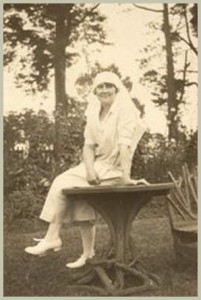 Staff Nurse Doris Marion Green
Staff Nurse Doris Marion Green
One of four nurses who sailed aboard the Orvieto at the commencement of WWI, Doris Marion Green, of Colac, enlisted in the Queen Alexandra’s Imperial Military Nursing Service Reserve in Egypt on 22 January 1915 and served at Mena House hospital, Cairo. Green was a surgical nurse in Colonel Bird’s team on the hospital ship Silicia for the Gallipoli and Salonika campaigns and received mention for her work there, receiving a promotion to Sister in 1918. She later served in the India Afghan war and finally returned to Australia in 1920, where she continued to nurse. Doris Marion Green died 20 June 1973.
(Research on Staff Nurse Green supplied by Dr Kirsty Harris, School of Historical and Philosophical Studies, University of Melbourne)




